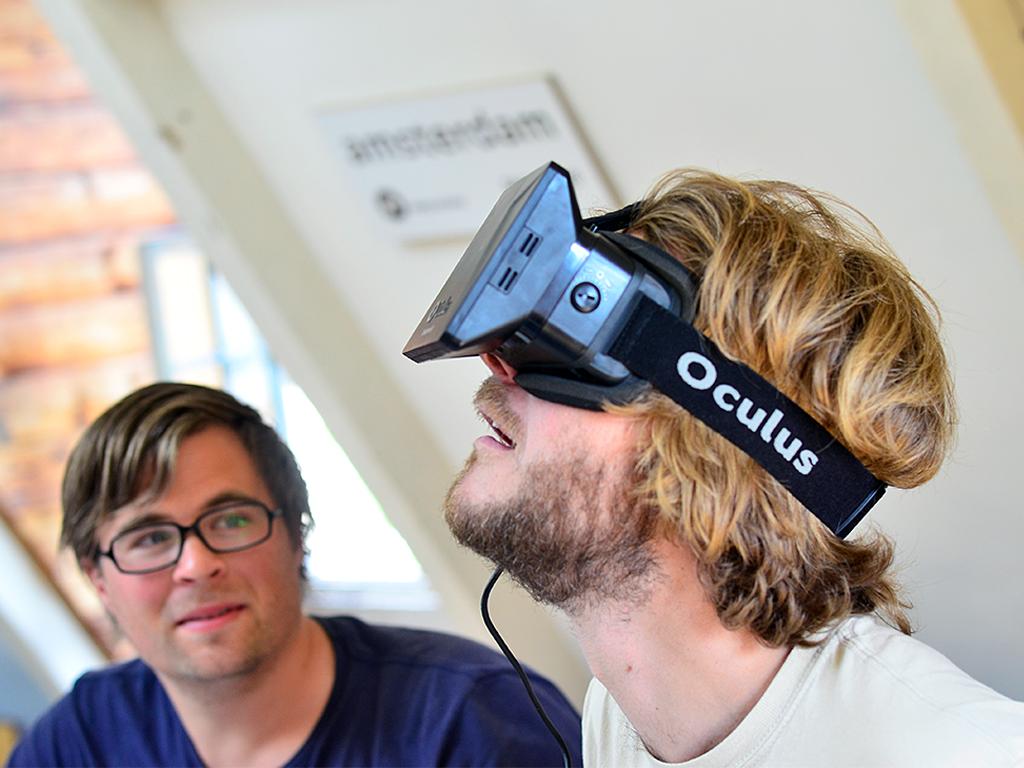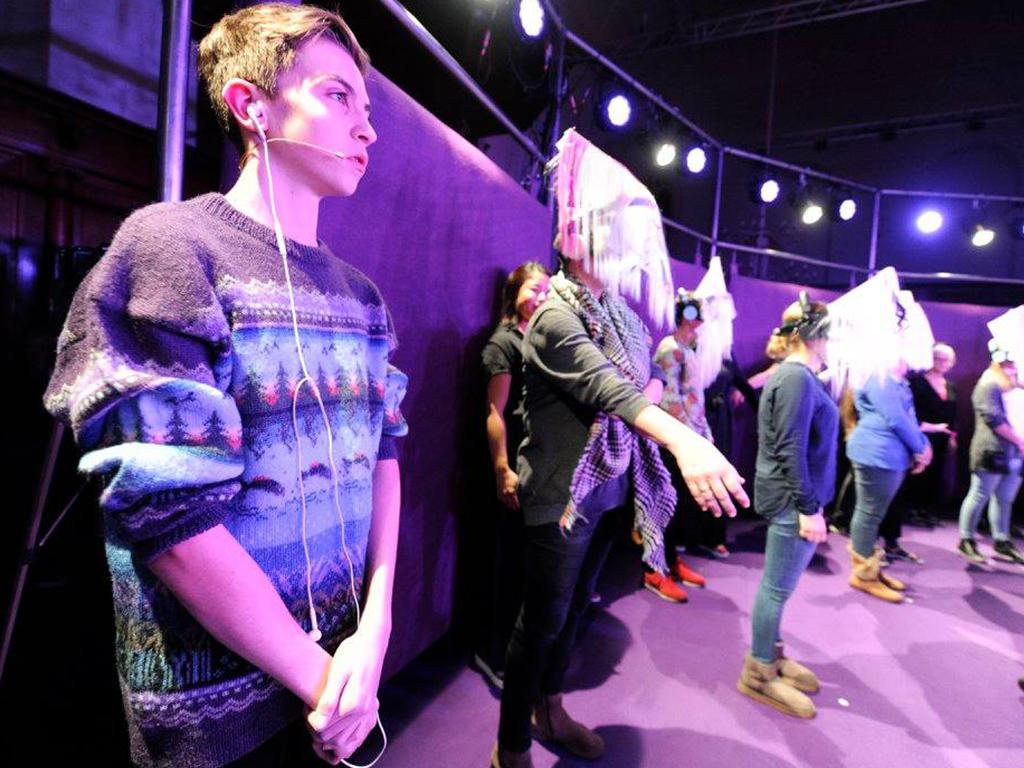Four students at the University of Amsterdam are researching the possibilities of Virtual Reality with (and at) Waag. In this Virtual Reality (VR) environment, users are exposed to audiovisual material with the purpose of maximising the user's arousal levels in the shortest possible time. By measuring the corresponding biofeedback, the system could derive which kinds of images and sounds have the most impact on the user.
Last year, a different group of students already explored the possibilities of this project. A small piece of software was made that used a learning algorithm to present arousal inducing audio stimuli. This January, a new team continued the project. Over the course of a month, they designed the initial version of the virtual environment, focusing on the imagery and excluding all audio stimuli. Within the VR environment, users can choose between different imagery based on which of the displayed scenes in the images they find the most frightening or disturbing.
The system utilises a machine learning algorithm, that takes the time spent viewing each image, the heart rate and the selected image as parameters to determine which images should be shown next. The end result is a set of images that the system has determined to be frightening or disturbing for the user.
The team consists of four students of the Master’s programme Information Studies: Human Centered Multimedia, Michael Chen, Gerben van der Huizen, David van der Kooij, and Rashid Mohamed.
Currently, there are four sub projects running which are each trying to improve different aspects of the system. Three of the involved project require a number of participants for user testing, which will help with evaluating the improvements.
This is where you come in. Participation in one of the projects will not take more than half an hour of your time, and will contribute to the Waag’s Your Worst Nightmare project and to VR research in general. The tests will take place in May. So, if you wish to participate in one or more of these projects, you can enroll below and you will be notified on when you can help improve this project.
You can register until April 30th, 2016
The three master thesis projects involved in the project are:
- A project which tries to test an in-simulation method for reducing cybersickness in VR environments. Participants will test a tutorial environment prior to the YWN environment, which is meant to habituate them to the VR environment and thus reduces the amount of cybersickness they experience. (Gerben van der Huizen)
- A project which tries to enhance the user experience in virtual self-exploration environments by providing the user with extrinsic feedback (e.g. a timer, a confirmation message). The main purpose of this project is the examine which form of feedback for each component is more suitable (i.e. auditory, visual or both). (Michael Chen)
- A project which tries to test which navigation and interaction method improves the user experience of the YWN environment. The participants will test three environments that provide the user with different methods to navigate and interact within the environment. (Rashid Mohamed)

